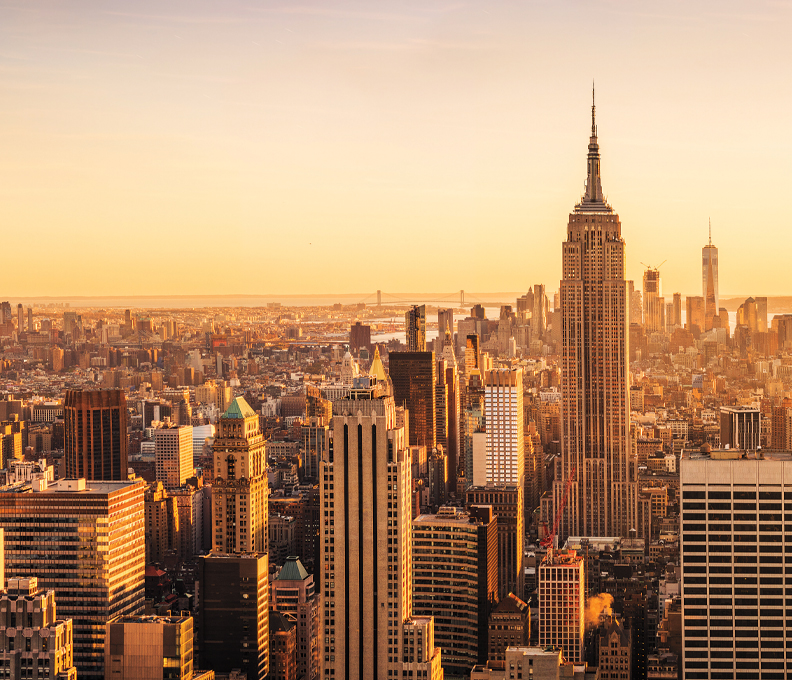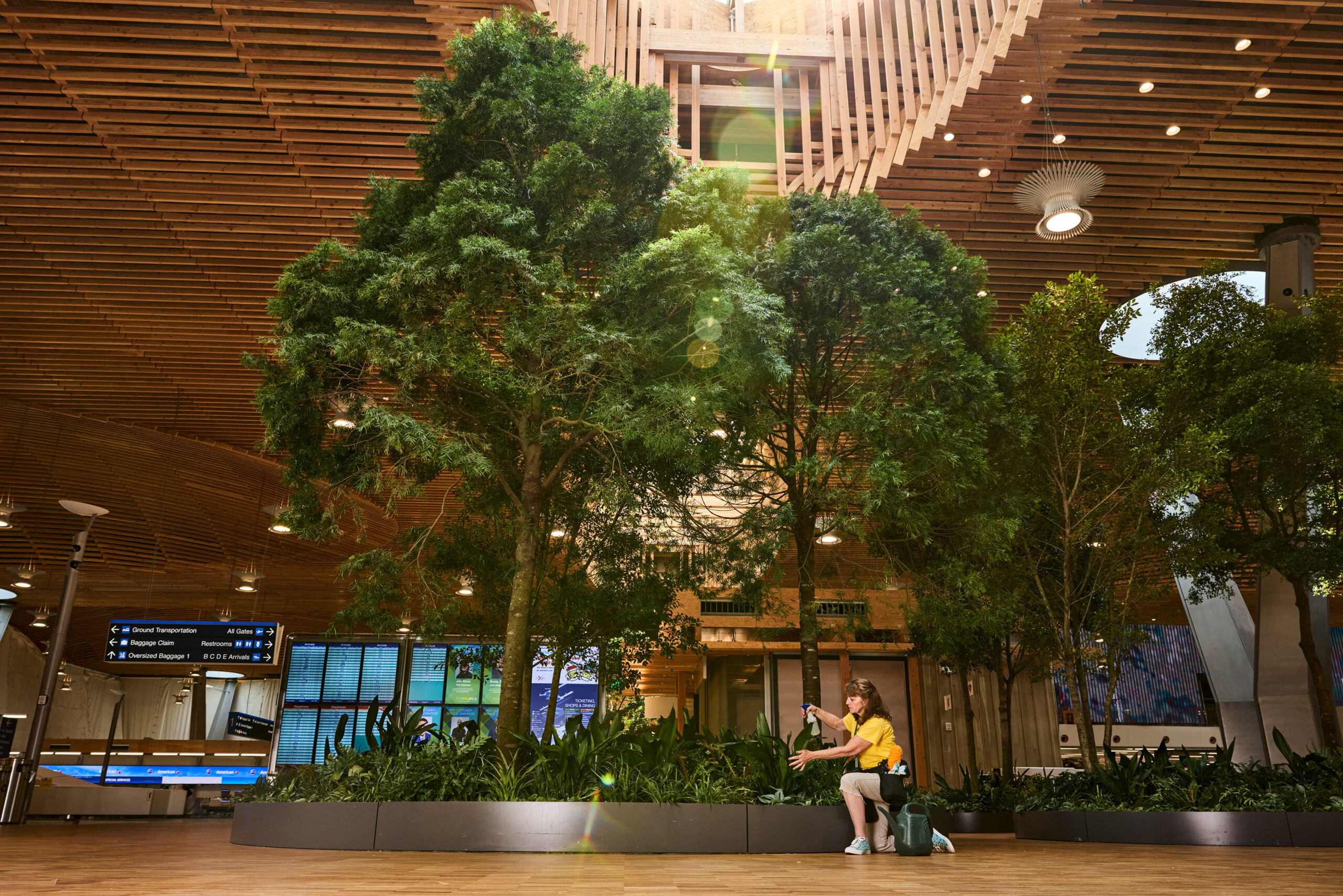Business Class vs. First Class: What’s the Difference?
As Business and First Class continue to evolve, which is the best choice for you?
by Lark Gould
November 24, 2022
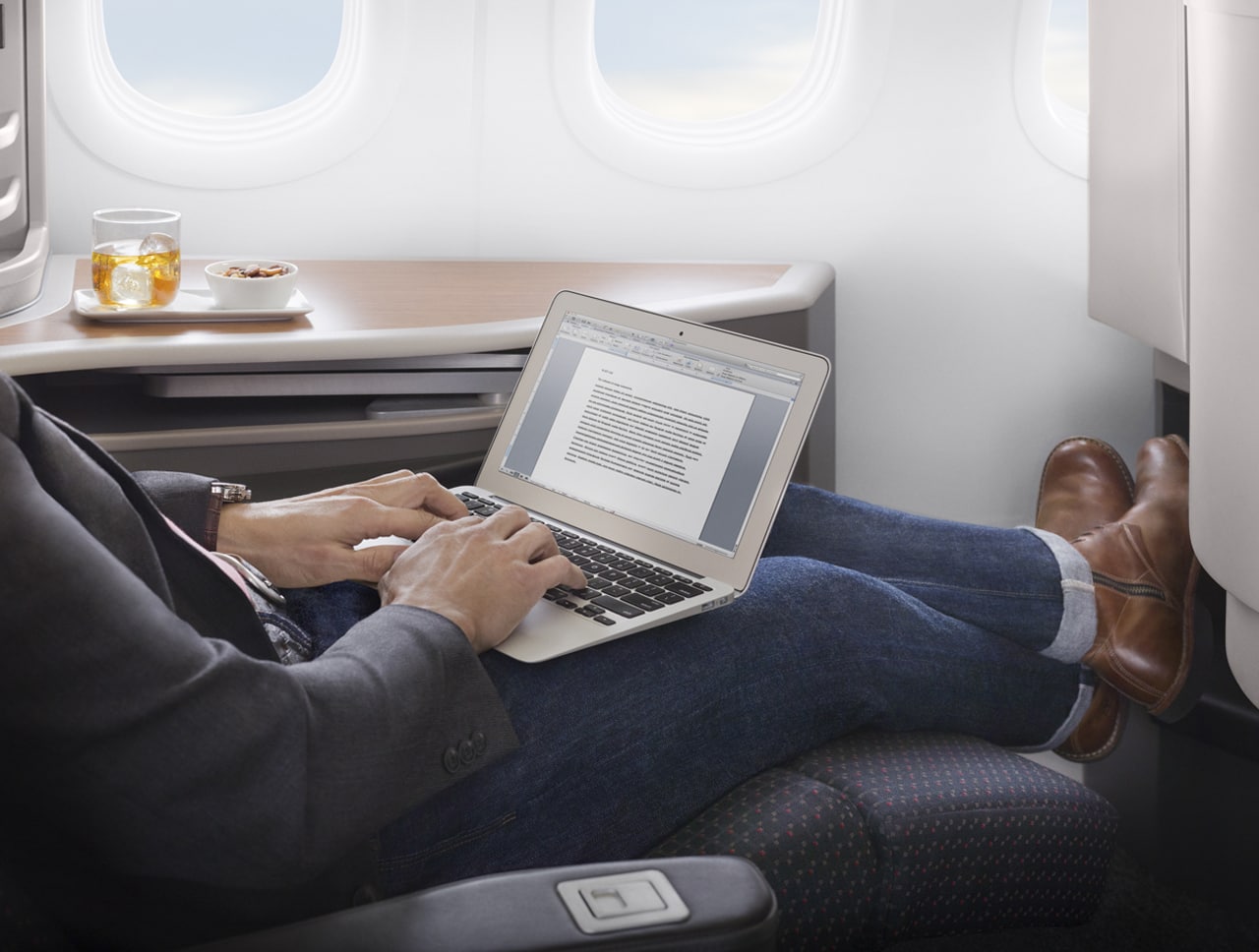
American Airlines traveler reclining in First Class / Photo: American Airlines
The difference between First Class and Business Class is a moving target as some airlines ramp up to reach an ever-burgeoning class of moguls, and others ramp down to fit an ever-tightening business traveler budget.
The differences and descriptions of these two cabins in services and configurations mostly matter to those taking international flights. On U.S. domestic routes, if there is two-cabin service at all, it will be between the back-of-the-plane, 3×3 Economy Class—with possibly a “premium economy” option with some extra legroom and perhaps an added inch on the seat—and First Class—a wider, more comfortable 2×2 configuration of possibly eight rows and with quicker, dedicated cabin service offering more choices in food and beverage.
Business Class vs. First Class on International Flights
Business Class was introduced in the 1970s, a departure from two-class service to offer a comfortable ride to business travelers who had the budget to pay more, a need to be able to work during the flight, and a requirement to not arrive at a destination rumpled and jet-lagged.
The concept became an instant revenue generator for the airlines (business travelers account for 12 percent of flyers but 75 percent of the revenues) and the option was also a win for corporations that needed to up the game to keep their leading executives happy while not breaking the bank.
For airlines, it left an opportunity to not only lure business travelers to better seats, but to garner interest from an uber class of celebrities, royalty, CEOs who may not be able to fly the distances privately. The new First Class experience offered an enhanced class of service and as well as added privacy for significantly higher rates.
The race for top First Class product ramped up in the 1990s. Emirates offered a small First Class cabin with wide seats with near zero-gravity pitch in the seats. There was a dedicated terminal for check-in in the gleaming new international airport in Dubai and carts of Dom Perignon and Beluga caviar ambled endlessly down the aisles during the flight.
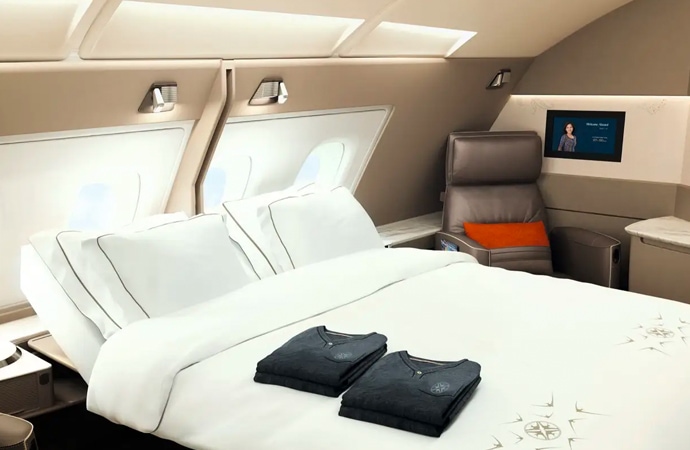
A first-class suite onboard a Singapore Airlines Airbus A380 / Photo: Singapore Airlines
In 2014, Etihad came out with The Residence suites, a veritable Penthouse in the Sky with a leather couch in a private sitting room that led to a private double bed in the chamber beyond, including an ensuite bathroom and shower.
While the pandemic forced some airlines to downgrade, earlier this year Singapore Airlines introduced its A380 Suites. The cabin offers ample room with a double bed and chair and plenty of entertainment features and relaxation components.
First Class “Pods”
Airlines have been upping the ante on Business Class seats over the past two decades so those airlines still offering First Class options have had to come up with something better than just an improved seat. Meet the First Class Pod. These are quasi-private seat compartments at the front of the plane and are available on Delta, Emirates, Etihad, Air France, ANA, Garuda Indonesia, Korean Air, China Eastern, British Airways and others as new routes and remodeled aircraft take flight.
Pods are mostly a bigger Business Class seat in a cubby with a door all occupying a smaller, more private cabin area at the front of the plane. They are not fully private as the ceiling remains open so that cabin staff can monitor passenger needs without disturbing them. These seats may come with enhanced varieties of Champagne and meal choices and all come with other First Class benefits offered by the airline but not standard among all the airlines: a dedicated terminal, special check-in, and TSA lines, a dedicated lounge, and possibly black car transfers.
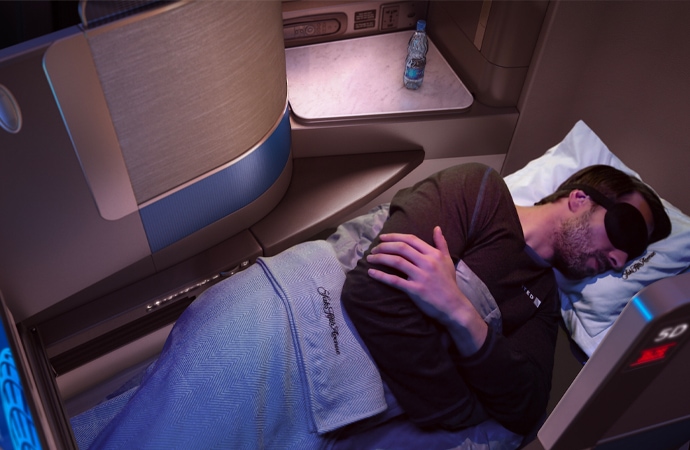
United Airlines business-class sleeping pod / Photo: United Airlines
Business Class Defined and Refined
Business Class is a standard among international long-haul carriers as well as many domestic carriers. The cabin sits ahead of Economy Class, usually separated by a curtain or kitchen galley, and is easily twice to four times as expensive as an economy seat—making it a smart purchase for points holders and an efficient upgrade option in points for those holding a paid economy ticket.
Most Business Class cabins offer configurations of four seats across: single seats along the window areas and two side-by-side seats in the middle. Also becoming standard is the fully lie-flat concept built into these seats, which allows passengers up to 6’6” in height to have a flat—not slightly tilted—sleep experience. International flights may offer 40 of these seats in ten rows.
Business Class seats are given to more cushioning and passengers gain added cushioning from dedicated bedding and pillows provided for each seat. Passengers have plenty of legroom and space or compartments for placing and accessing their carry-on items—computer, book, glasses, shoes—and keeping the space organized and clean. For those in the middle rows, convenient noise and view screens between seats enhance privacy. As in First Class, the entertainment systems are given to large screens and comfortable luxury headphone components.
And in fitting with this class and the needs of many of its business traveler flyers, business class check-in is speeded up with a dedicated line. Complimentary luggage allowance is expanded and often there is a priority line for security clearance and boarding, which often happens through a separate door of the plane. Amenity kits are standard and some come as very useful pouches with brand-name products—such as Sunday Riley creams as given on United’s Polaris flights.
Business Class flyers are automatically offered entrance to dedicated airport lounges, which may or may not be shared by First Class flyers. While lounges vary, some are more luxurious than others offering free massages and manicures (Centurion, Virgin), game rooms, movies, golf training (Turkish Air), outdoor terrace and fire pits (Star Alliance, Delta at LAX), and premium foods, spirits and private sleeping spaces (Singapore Airlines).
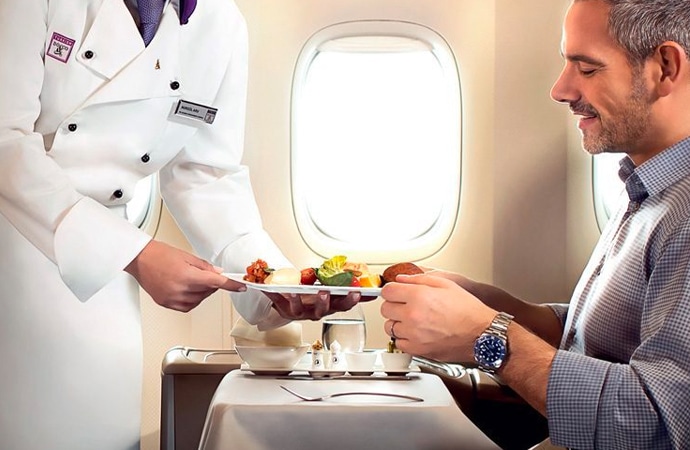
Business class passengers on long-haul Turkish Airlines flights served by the carrier’s ‘Flying Chefs’ / Photo: Turkish Airlines
Inflight menus are also enhanced on Business Class flights. Expect gourmet dishes you might receive in an upscale restaurant in New York or Los Angeles. Singapore Airlines offers a “Book the Cook” program that allows passengers to order a meal created and supervised by special celebrity chefs for a dining experience in the sky that would be hard to get on the ground without an inside beat on a reservation. Turkish Airlines Flying Chefs prepare the meal from a cart right at your seat. And some airlines, such as Singapore and Turkish, allow for healthy choices with dishes divined by leading spa chefs and health experts.
Business Class vs. First Class: The Upshot
While the leap from Economy Class to Business Class is substantial, the step from Business Class to First Class is more of a choice for privacy than a consideration of comfort.

